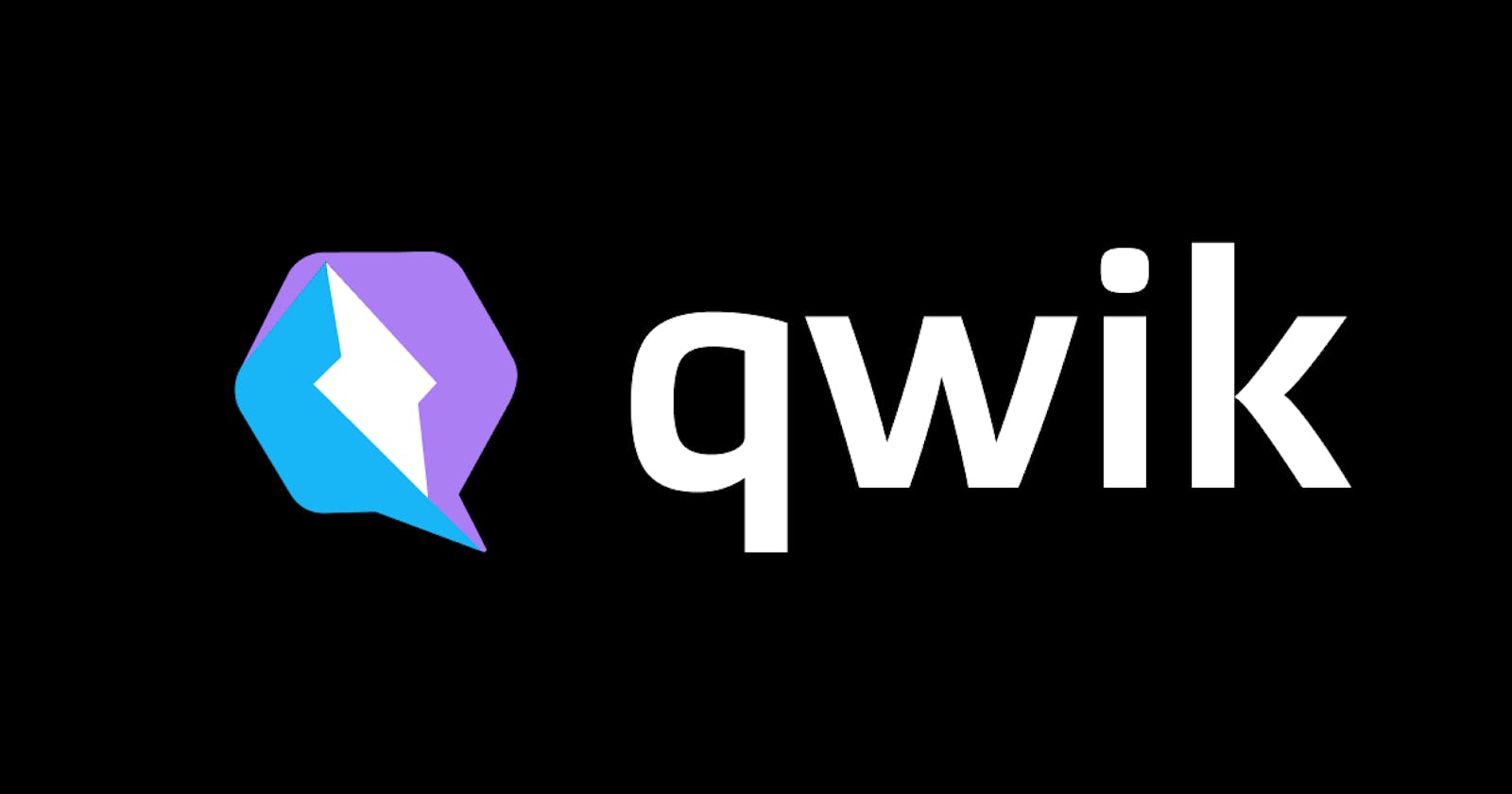Intro
JavaScript frameworks are a dime a dozen these days, with new ones cropping up seemingly every week. With so many options available, it isn't easy to know which one to choose for your next web application project. But if you're looking for a fast and lightweight framework that's easy to use, look no further than Qwik.
This article will explore why Qwik is rapidly becoming the new golden child of JavaScript frameworks. We'll discuss its simple and intuitive API, lightweight and fast nature, and cross-platform compatibility. By the end of this article, you'll understand why Qwik may be the perfect choice for building your next modern web applications.
So let's dive in and closely examine what makes Qwik so unique.
Why it is a Game-Changer for Modern Web Development
Qwik is a fast and lightweight JavaScript framework rapidly gaining popularity among developers. Its simple and intuitive API, cross-platform compatibility, and lightning-fast performance make it the perfect choice for building modern web applications. In fact, Qwik is so popular that it's quickly becoming known as the "new golden child of JavaScript frameworks."
One of the most exciting features of Qwik is its seamless integration with Builder.io. Builder.io is a no-code visual editor that allows you to design and build dynamic web pages without any coding required. With Qwik, you can easily integrate your Builder.io pages into your web application, creating a truly seamless user experience.
What are the main features of Qwik
Qwik boasts several other impressive features. Its server-side rendering capabilities allow for lightning-fast load times, while its modular architecture makes it easy to manage and scale your application. And with its support for TypeScript, Qwik provides a type-safe environment that's perfect for large-scale projects.
Another benefit of Qwik is its ability to handle complex state management. Qwik uses a reactive model, which means that it automatically updates the user interface in response to changes in state. This makes it easy for developers to build responsive and interactive web applications.
Additionally, Qwik is designed to be easy to learn and use. Its API is simple and intuitive, so developers can quickly start building their applications. And with its comprehensive documentation and active community, developers can easily find the resources and support they need to succeed.
Ok, but I heard something about resumability?
Resumability is a unique and powerful feature of Qwik that sets it apart from other JavaScript frameworks. It refers to the framework's ability to maintain the application's state even after a network interruption. This means that users can continue to interact with the application seamlessly, without interruption, even if they experience a temporary loss of connectivity. This is particularly important for applications that require real-time data updates or heavy data processing.
Another benefit of Qwik's resumability feature is its ability to minimise the impact of server errors. If a server error occurs, Qwik.js can quickly resume the render process from where it left off, minimising the impact on the user experience. This means that users can continue to use the application without any loss of data or functionality, even if a server error occurs.
Qwik's resumability feature is a game-changer for building highly reliable and responsive web applications. It provides users with a seamless and uninterrupted experience, even in the face of network interruptions or server errors. So if you're looking for a fast, lightweight, and reliable JavaScript framework for your next web application, Qwik.js is definitely worth checking out.
And serialisation on the server?
Qwik also has a unique feature that allows for server-side serialisation. This means that the application can be pre-rendered on the server and sent to the client as a fully rendered HTML page. This can significantly reduce the time it takes for the application to load, resulting in a faster and more responsive user experience.
However, it's important to note that not all applications will benefit from server-side serialisation. This feature is best suited for applications with a lot of static content or requiring a fast initial load time. Developers should carefully consider whether or not server-side serialisation is right for their specific application before implementing it.
Let’s Qwik all the things!
I would not suggest this approach. As with all new technologies, there are downsides to using Qwik.
This includes its relatively new status and the limited amount of resources available. While the community is active and growing, developers may still encounter issues that have not yet been addressed. Additionally, Qwik may not be the best choice for large-scale applications, as its modular architecture may not be as effective in managing extremely complex projects. However, Qwik is a solid and reliable choice for most web development projects that can help developers create fast, responsive, and dynamic web applications.
If you're interested in trying out Qwik for your next web application project, be sure to keep an eye on the official documentation and community resources for updates and support. While there may be some downsides to using a relatively new technology like Qwik, its impressive features and benefits make it a compelling choice for many developers. So why not give Qwik a try and see how it can take your web development to the next level?
Conclusion
Overall, Qwik is a game-changer for modern web development. Its speed, simplicity, and flexibility make it the perfect choice for developers looking to build fast, lightweight, and scalable web applications.
Check out the official documentation to learn about Qwik and how it can revolutionise your web development workflow.

